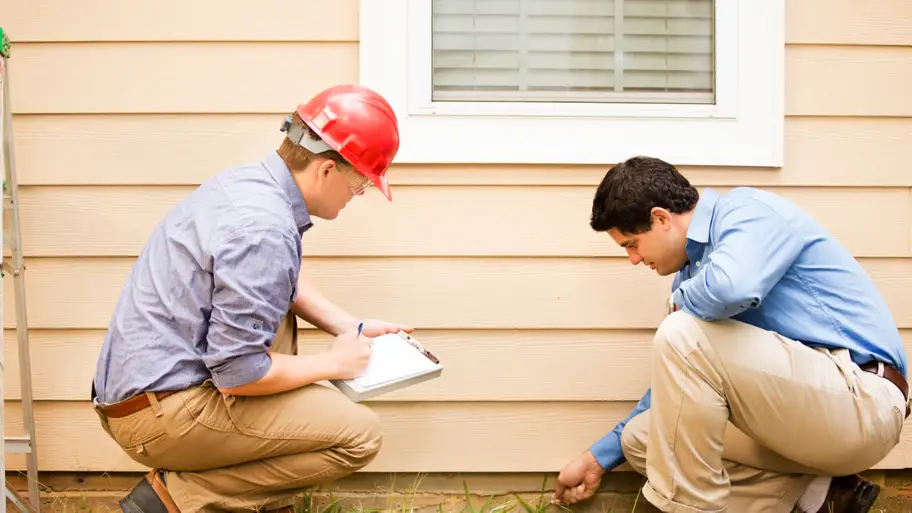Assessing the potential dangers lurking within the walls of a prospective new home is an important part of the home buying process. But when it comes to one particular hidden hazard – asbestos – can you rely on a standard home inspection to detect it?
What is Asbestos and Why is it Dangerous?
Asbestos refers to a group of natural, fibrous silicate minerals that were once widely used as building materials. Valued for their durability and resistance to heat and fire, asbestos-containing products were found in many homes constructed before the 1980s.
However, over time it was discovered that asbestos fibers can be extremely hazardous to human health if inhaled. When asbestos materials age, are damaged, or disturbed, they release microscopic fibers into the air. When breathed in, these tiny, needle-like fibers lodge deep in lung tissues and can cause inflammation and scarring over many years.
This scarring can lead to serious, sometimes fatal illnesses like lung cancer, asbestosis (a chronic lung disease) and mesothelioma (a rare cancer of the linings of the lungs and other organs). These diseases often don’t show up until decades after asbestos exposure.
Today, due to the immense health risks, asbestos usage in homes and consumer products is banned or strictly regulated in most countries. But for homes built before 1980, there still may be asbestos materials present that pose a hazard if not properly managed.
What’s Included in a Standard Home Inspection?
When you’re buying a home, a standard home inspection is a routine part of the process. Hiring an experienced home inspector to evaluate the overall condition of the home before purchase can help identify defects, maintenance issues, and safety concerns – allowing you to make an informed decision and potentially negotiate repairs.
During a home inspection, the focus is mainly checking the home’s:
- Foundation and structure
- Roof, gutters exterior
- Interior walls, ceilings, floors
- Electrical systems
- Plumbing and drainage
- HVAC systems
- Built-in appliances
- Overall livability and safety
While home inspectors check all visible parts inside and out, they aren’t necessarily looking out for hazardous materials like asbestos. Identifying asbestos requires additional training and certification.
Should You Get an Asbestos Inspection?
Since knowing whether a home contains asbestos could impact your family’s health and safety, it’s smart to consider an asbestos inspection, especially for older homes.
In the US, homes built before 1980 potentially contain asbestos in materials like insulation, floor and ceiling tiles, roofing, and wall compounds. Disturbing these fragile materials can release asbestos fibers into the air you breathe.
While some states require sellers to disclose known asbestos, there is no federal requirement. Don’t rely solely on what the seller says. Work with qualified asbestos professionals to identify and manage any risks.
Signs your home may have asbestos:
- Popcorn or textured ceilings
- Vinyl sheet flooring, vinyl tiles
- Crumbling pipe or duct insulation
- Cement wallboards or siding shingles
- Loose insulation in attics
If you see these in a pre-1980s home, have a professional take samples to test for asbestos content before doing renovations.
The Asbestos Inspection Process
A asbestos inspection involves collecting small samples of potential asbestos-containing materials, like insulation or ceiling textures, and having them analyzed by an accredited lab.
Here’s what to expect during the inspection:
- The asbestos inspector isolates areas where they take samples by sealing vents, covering furnishings, etc. This helps contain any asbestos disturbed during sampling.
- Samples are collected in sealed bags to prevent releasing fibers. Sampling may involve scraping small amounts of materials or drilling holes to take core samples.
- Areas are cleaned thoroughly after sampling.
- You may be asked to avoid the testing areas until results come back to avoid possible exposure.
Once results are available, materials with over 1% asbestos are considered asbestos-containing. An assessment will determine if the materials are in good shape or deteriorating, which impacts your risks and next steps.
If removal is necessary, hire certified asbestos abatement professionals to contain, dispose of, and clean up asbestos safely. Never attempt DIY removal.
Does a Home Inspection Include Checking for Asbestos for a Conventional Loan?
Yes, a home inspection for a conventional loan typically includes checking for asbestos. This is important for the safety and health of the future homeowners. Asbestos can be found in insulation, flooring, and other areas of the home, so it’s crucial to have a thorough inspection before finalizing the loan.
Asbestos Inspections vs. Traditional Home Inspections
While standard home inspections focus on the home’s physical structure and systems, asbestos inspections zero in on identifying hazardous materials.
Here are some key differences:
While some home inspectors may point out areas that seem like possible asbestos risks, confirming asbestos requires separate testing by qualified professionals.
Paying for Asbestos Inspections and Removal
Asbestos testing costs around $400-$1000 for most single family homes. Larger homes or those with lots of asbestos may run $1500+. Factors like lab fees and extent of sampling impact the costs.
If asbestos is found, abatement or removal can cost $10,000+ depending on how widespread it is. For smaller jobs under about 10 square feet, expect to pay around $2000.
Sellers aren’t obligated to pay for inspection or abatement costs, but buyers can attempt to negotiate to get sellers to cover some or all these expenses. Otherwise, buyers typically need to shoulder the costs if they want testing and removal done after the inspection.
While a general home inspection is useful for evaluating a home’s overall condition, it doesn’t provide assurance regarding hidden asbestos hazards. For your family’s safety, it’s wise to hire an accredited asbestos professional to identify and properly manage any risky materials in older homes. Paying a little extra for testing and removal could save you from asbestos health risks and costly problems down the road.
